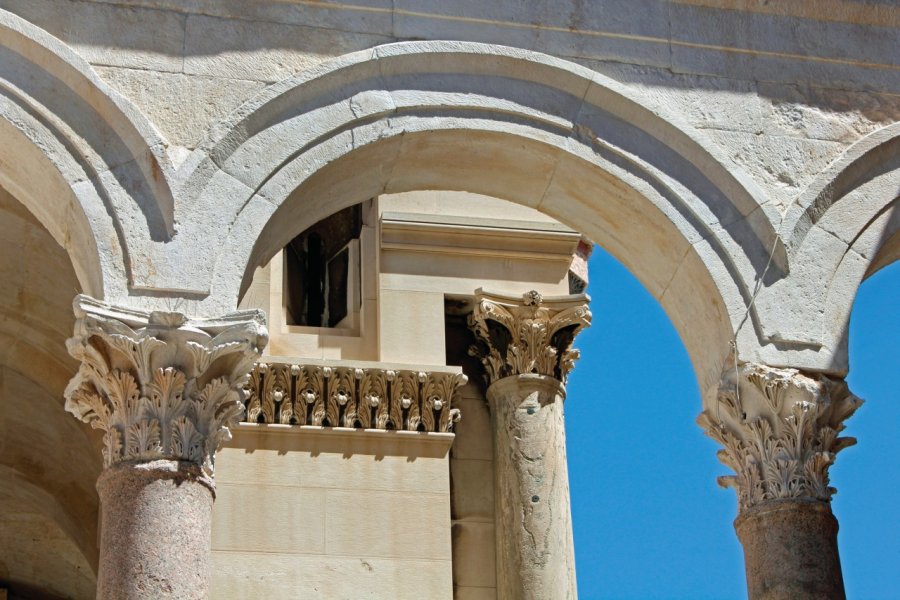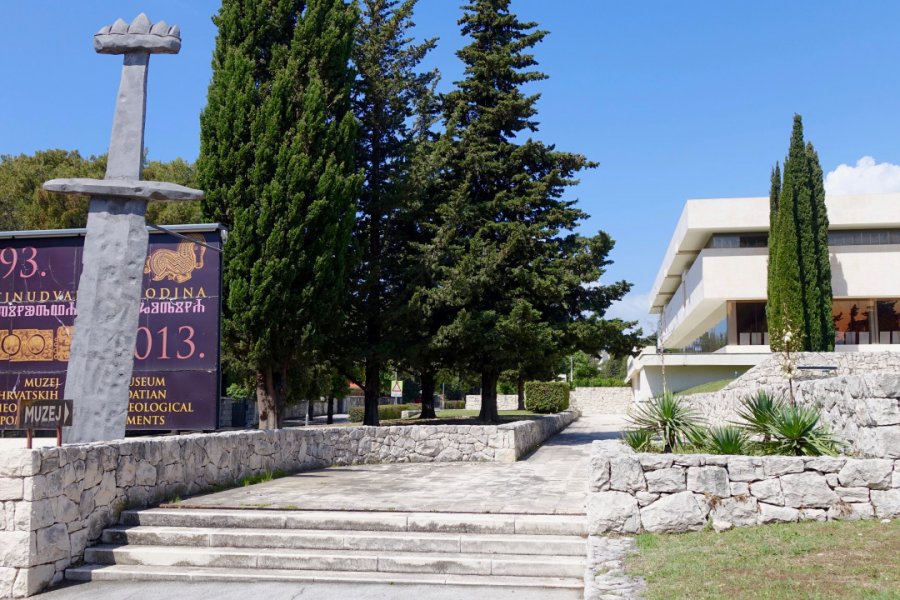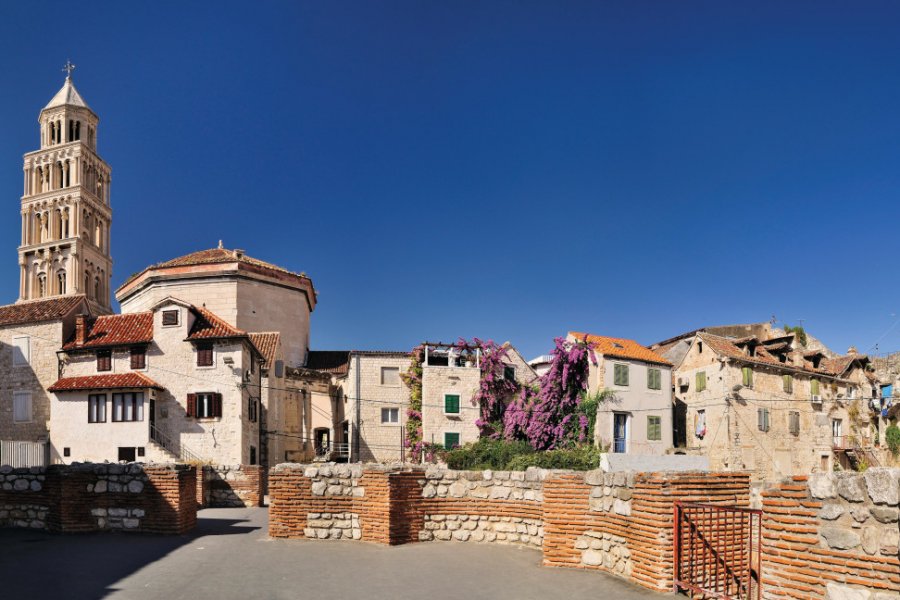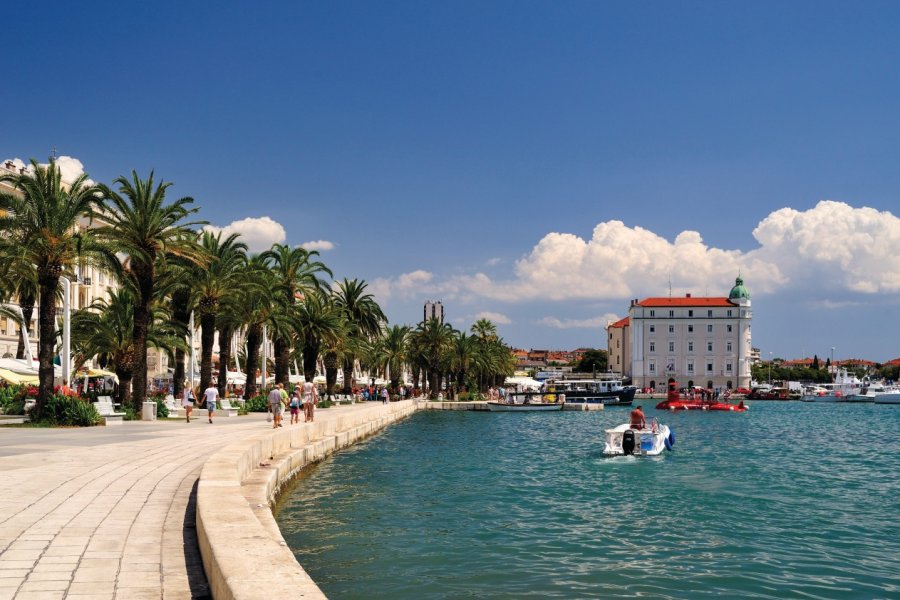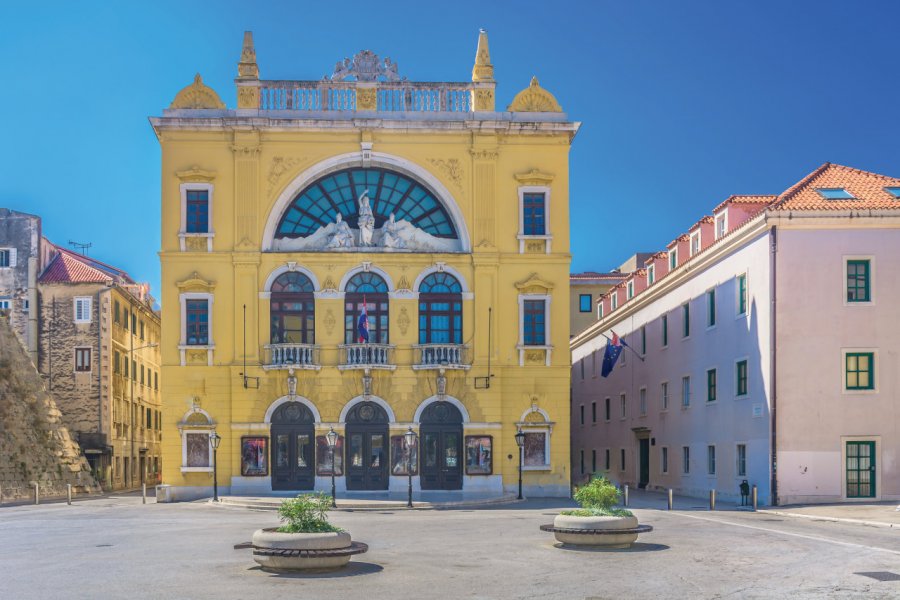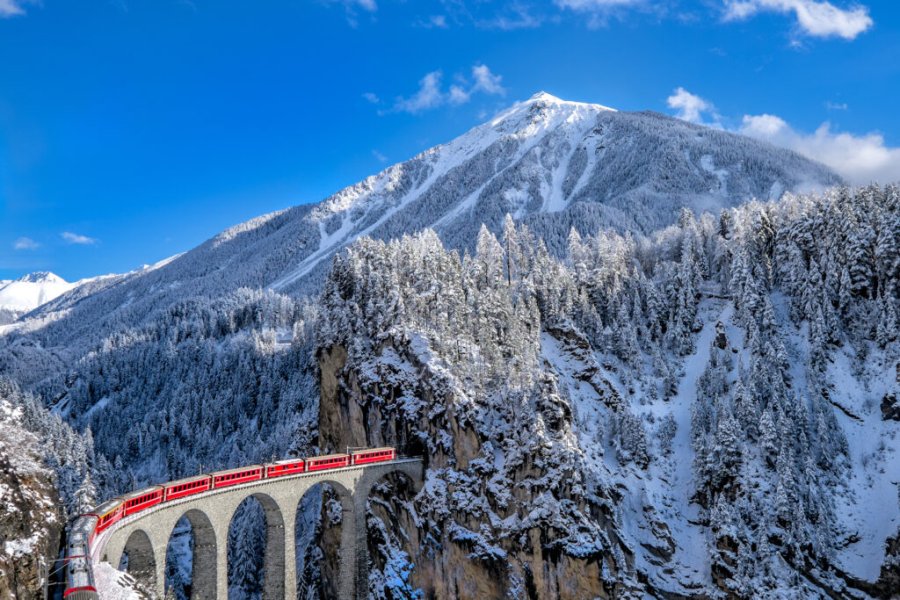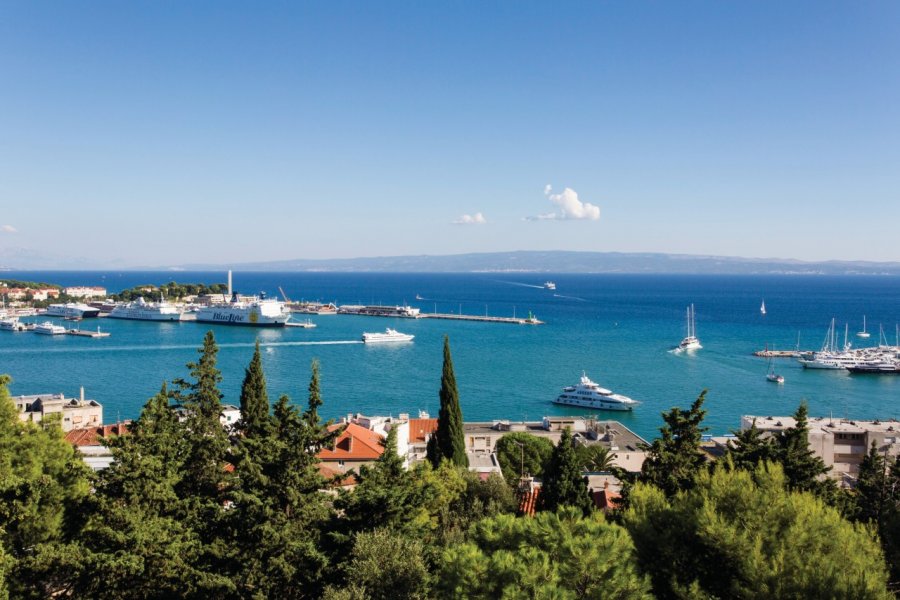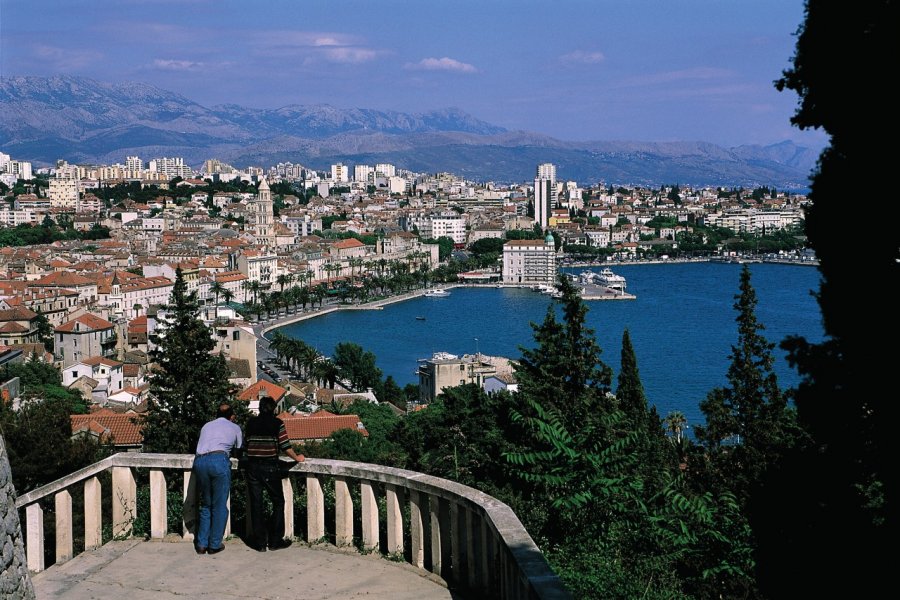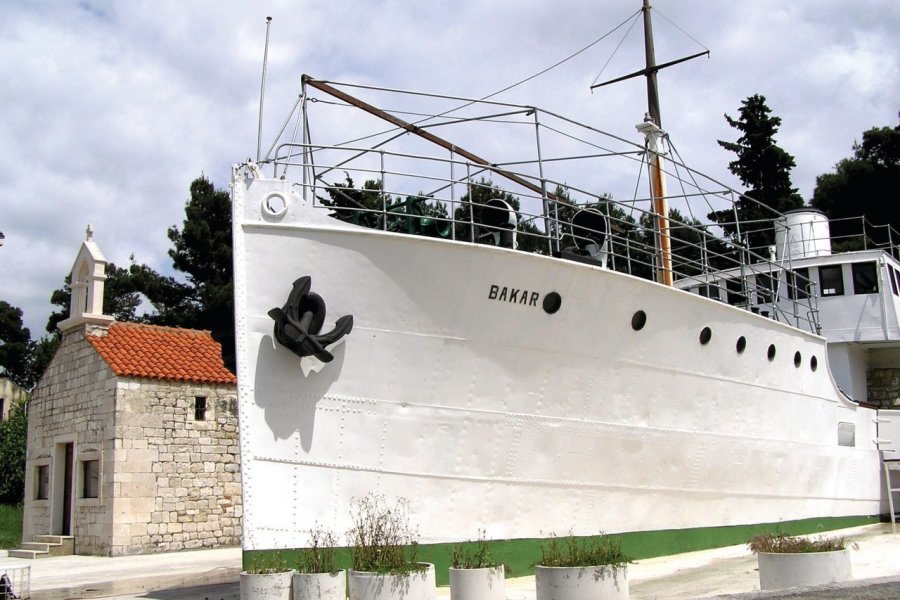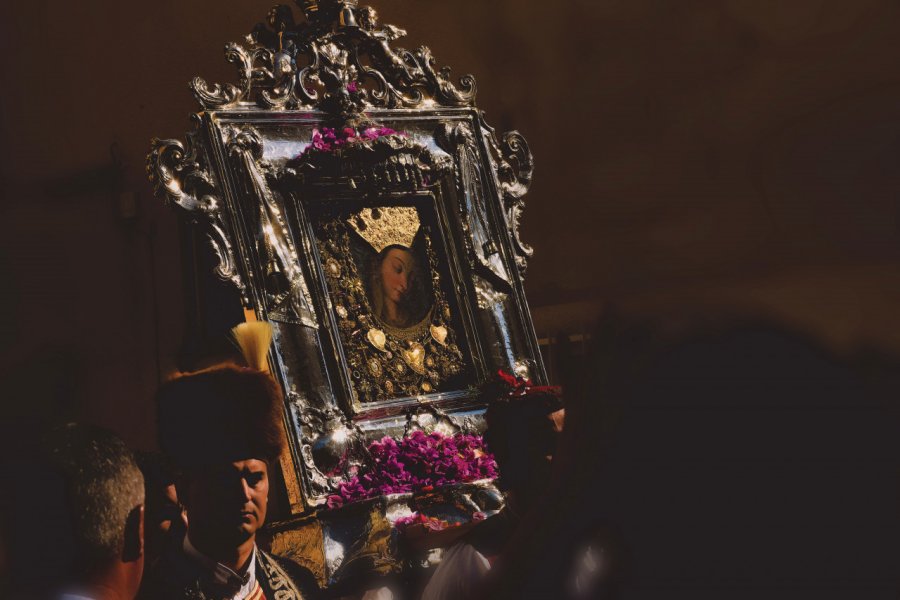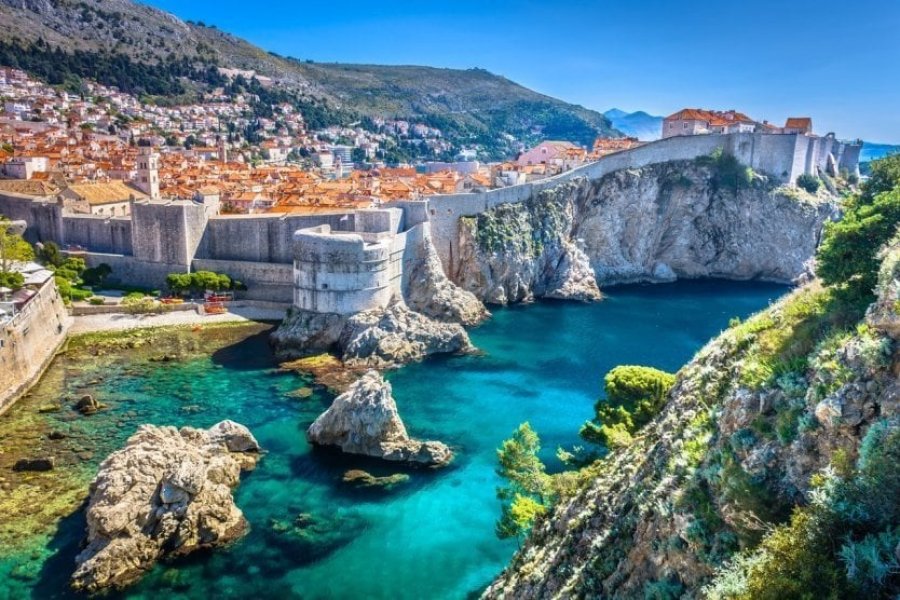Travel Guide Split
By building his palace on this peninsula of the Adriatic Sea, 17 centuries ago, the Roman emperor Diocletian was at the origin of this city of Croatia. Diocletian's palace is in the center of the old town and the numerous vestiges of the Roman and medieval periods give the city its patrimonial interest. From the ancient Peristyle, to the small Romanesque or Gothic medieval churches, from the Renaissance portals to the patrician houses, from the Baroque facades to the wonderfully integrated modern architecture, it is harmony that dominates. Moreover, Split is a really charming destination to live. You can share the daily life of the locals sitting on the terraces of cafes and in the halls of restaurants, filling your basket at the market with fruit, vegetables and fish, walking along the Riva, along the quays and the palm trees. It is a lively, joyful, noisy and friendly seaside resort that we discover. The cultural life is well developed and several museums can be visited. You have nightclubs and casinos, shows and animations especially in summer. For a bit of peace and nature, go to the hill of Marjan where you will enjoy the forest, the paths, the cliffs with climbing routes unless you choose to lie down on the beach facing a beautiful sea. Don't forget your tour guide!
What to visit Split?
Suggested addresses Split
When to go to Split?
When to go to Split? The best time to visit Croatia and stay in Split is from May to September: it is a warm and sunny period. However, if you have the opportunity, you may want to avoid the months of July and August. The Adriatic coastline sees an influx of European vacationers who mix with the local population and tourists. The beaches are crowded, as are the historical sites and national parks, especially from July 15 to August 15. May, June and September are the best months to visit. The bulk of family tourism has not arrived or has already left. Hotels and private rentals generally charge "low season" rates. In April and October, it can be a little cool to sleep in a tent or go swimming, but the Croatian coast continues to enjoy bright days, perfect for hiking, although rainfall can be heavy. You can swim in the Adriatic Sea from the beginning of June to the beginning of October (water temperature between 21 and 24°C). In the summer in Split, many shows are scheduled, including the Ultra Europe Festival, an electronic music festival, in July.
Weather at the moment
The climate in Croatia varies from semi-continental in the north, with high altitude temperatures in the center, to Mediterranean on the Adriatic coast and in Spilt, with contrasting episodes throughout the year: early springs, pleasant late seasons, plenty of sunshine, but also heavy precipitation, from north to south, violent winds. Summers are generally very hot, but the rest of the year is rather mild.
The Croatian currency is the kuna. For the moment, a trip to Croatia (except for the transportation to get there) will not be too expensive for a French tourist; even if differences exist according to the sites. Zagreb and the Adriatic coast, especially Split, are more expensive. Please note that the euro is also accepted, which tends to push the prices up a bit. However, it is better to have in your wallet bills of both currencies: euro and kuna.
As Croatia is a member of the European Union, a passport or identity card is sufficient to stay in Split for European Union nationals for a tourist stay of less than three months. No visa is required to travel to Croatia. Attention, each minor (even if accompanied by his parents), must have an identity card or passport in his name: the Croatian border police is very vigilant in this respect.
In Croatia and Split in particular, the health services are very competent. Before you leave, just check to see if your vaccinations (DT Polio, etc.) are up to date. Concerning water in Croatia, no problem: tap water is drinkable throughout the country. If some insects can be found on the coast and in the forests, they will not be so different from French insects and the precautions (creams...) will be the same. Since Croatia's accession to the EU, the European Health Insurance Card has been accepted.
Practical information
- When to travel?
- Weather forecast
- Budget
- Formalities
- Health
- How to travel by yourself?
- How to get organized?
- Getting around
Media
How to go to Split? Our advice & tips
Croatia, a major destination for Eastern European tourism, is easily visited by organised tours. Many tours are organized (by coach, self-drive, group or individual, cruise in the Adriatic Sea, cultural tour...) to discover Croatia and its cities. Escapades are also possible and focus on cities. Finally, you can also opt for an "all inclusive" seaside holiday in some resorts (Split or Dubrovnik in particular).
Discover our selection of travel agencies for this destinationNo problem to visit Croatia by your own means. The plane is certainly the easiest way to get there. But bus, train, road or boat are also possible. The country is generally safe. However, be careful in some areas: there may be mines left over from the Serbo-Croat conflict. But the areas to avoid are well marked. Finally, wild camping is forbidden.
Many domestic air links. The bus network is denser than the train network. However, Croatia's steep terrain makes these bus journeys long and uncomfortable. Sometimes it is necessary to prefer the ferry, which is faster and cheaper. With the exception of frequent police checks, travelling by car is pleasant. The public transport network in Split is efficient. You also have taxis and taxi boats. And you can rent a car, a bike, a sailboat.

